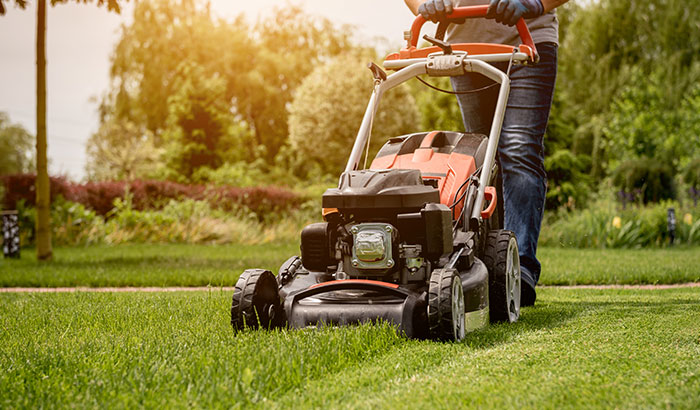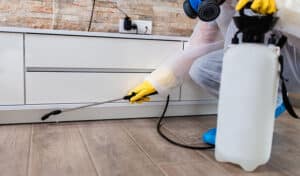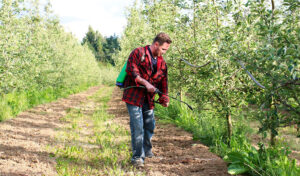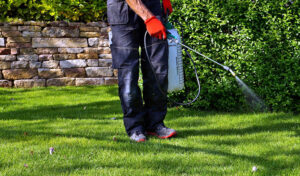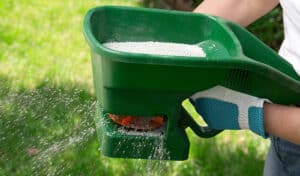As an experienced homeowner, you know that crabgrass can be a significant nuisance. It’s an annual weed that germinates in the spring and grows rapidly throughout the summer months. Crabgrass can quickly overtake your lawn, leaving it looking patchy and unhealthy. Even worse, it competes with your desired grass species, taking up valuable space in your lawn.
If you’re dealing with a crabgrass infestation, you’re not alone. Many homeowners struggle with this problem every year. However, there are steps you can take to combat this stubborn weed and restore your lawn to its former glory. In this blog post, we’ll provide you with the knowledge and tools you need to eliminate crabgrass and prevent it from coming back.
What is Crabgrass?
Crabgrass is an annual weed that grows in warm-season grasses like Bermuda and Zoysia. It’s a low-growing, spreading weed that can quickly overtake your lawn. The plant has a distinctive light-green color; its leaves are broad and flat with pointed tips.
One of the unique characteristics of crabgrass is that it germinates in the spring, several weeks earlier than most lawn grasses. This gives it a head start in the growing season and allows it to establish itself quickly. The weed is most prevalent in areas with warm summers and mild winters, and it’s often found in stressed, thin lawns, or poor soil.
Crabgrass reproduces by seed; a single plant can produce thousands of seeds during the growing season. These seeds can remain dormant in the soil for years, waiting for the right conditions to germinate. Crabgrass seeds require sunlight to germinate, so they’re commonly found in thin or patchy lawn areas. Once the seeds germinate, the plant begins to grow rapidly, spreading outward from the center of the plant in a star-like pattern.
Assessing the Extent of the Problem
The first step in dealing with a crabgrass infestation is to assess the extent of the problem. Take a walk around your lawn and look for areas where crabgrass is prevalent. The weed is easy to spot because of its light-green color and distinctive star-like pattern. Pay special attention to areas that receive a lot of sunlight, as crabgrass thrives in sunny areas.
If you’re having trouble identifying crabgrass, you can do a quick test. Pull a blade of grass from the affected area and look at the base of the blade. Crabgrass has a distinctive “V” shape at the base of the blade, while regular grass has a “U” shape.
Once you’ve identified the areas where crabgrass is present, assess the severity of the problem. If the weed is present in just a few isolated patches, you may be able to pull it by hand or with a weeding tool. However, if the weed has taken over large areas of your lawn, you may need to take more aggressive action.
It’s also important to assess the underlying cause of the crabgrass infestation. Crabgrass often takes hold in lawns that are stressed or unhealthy. Common causes of a stressed lawn include poor soil quality, lack of nutrients, and inadequate watering. By addressing the underlying cause of the problem, you’ll be better able to prevent the weed from coming back.
Options for Dealing with Crabgrass
There are several options for dealing with crabgrass, and the best approach will depend on the severity of the infestation and your personal preferences. Here are a few options to consider:
- Hand-pulling: If the infestation is relatively small, you can hand-pull the crabgrass. Be sure to remove the entire plant, including the roots, to prevent it from regrowing. If your whole lawn is infested, your better option may be to seek the help of lawn care services or use a crabgrass killer.
- Weeding tools: You can also use a weeding tool to remove crabgrass. Many types of weeding tools are available, including hand-held and larger tools that can be pushed or pulled. Look for a tool that is specifically designed for removing weeds like crabgrass. Make sure you remove as much of the root as possible.
- Herbicides: Herbicides can be an effective crabgrass killer, but it’s important to use them carefully. There are two types of herbicides: pre-emergent and post-emergent.
A pre-emergent herbicide is applied before the weed can germinate, while post-emergent herbicides are applied after the weed has already grown. Be sure to read and follow the instructions carefully when using a herbicide. Again, if you’re unsure what herbicide you should use, talk to local lawn care services to see what they recommend.
- Organic options: If you prefer to use organic methods, there are several options available. You can use a vinegar-based solution to kill the weed, or you try applying corn gluten meal to prevent the weed from germinating (though studies show that it may or may not be effective in preventing crabgrass). See what local lawncare services recommend if you’re looking for an organic crabgrass killer.
It’s important to note that while these options can be effective in removing crabgrass, they may not be enough to prevent it from returning. In the next section, we’ll discuss some strategies for preventing crabgrass from taking hold in your lawn in the first place.
How to Prevent Crabgrass
Preventing crabgrass from taking hold in your lawn is the best way to avoid dealing with it in the first place. Once you’ve taken care of the infestation, here are some strategies for preventing future crabgrass:
- Proper Lawn Maintenance: To maintain a healthy lawn, mow your grass to the correct height. For most grass types, this means keeping it between 2.5 to 3.5 inches in length. When you cut your grass too short, it weakens the grass and allows weeds like crabgrass to take hold.
You should also water your lawn deeply but infrequently. Watering too frequently can cause shallow root growth, making your lawn susceptible to drought and weed growth. Lastly, fertilizing your lawn appropriately will help it grow strong and healthy, making it less susceptible to crabgrass and other weeds.
- Timing: Timing is critical when it comes to preventing crabgrass. Applying pre-emergent herbicides too early or too late won’t be effective. The best time to apply pre-emergent herbicides is early spring when soil temperatures reach around 50 to 55 degrees Fahrenheit. This is usually around the time that forsythia bushes start to bloom.
Applying pre-emergent herbicides at the right time will create a barrier that prevents crabgrass seeds from germinating. It’s important to note that pre-emergent herbicides can also prevent desirable grass seed from germinating, so be careful when applying them.
- Aerate Your Lawn: Aeration involves removing small plugs of soil from your lawn to improve soil health and reduce soil compaction. Compacted soil can inhibit root growth and make your lawn susceptible to weeds. Aeration improves soil drainage and allows air, water, and nutrients to penetrate the soil, which helps your grass grow stronger and healthier. Aeration should be done in the fall or spring for best results.
- Mulch Your Lawn: Mulching your lawn involves leaving grass clippings on your lawn after mowing. This can help prevent crabgrass by reducing soil temperature and moisture. When grass clippings decompose, they release nutrients back into the soil, which can also help your lawn grow stronger and healthier. Mulching is an easy and effective way to prevent crabgrass and other weeds from taking hold of your yard.
- Keep Your Lawn Dense: A dense lawn is less susceptible to weeds like crabgrass because there’s less soil available for weeds to grow in. You can achieve a dense lawn by regularly overseeding and filling bare patches. Overseeding involves spreading grass seed over your lawn to promote thicker grass growth. It’s important to choose the right type of grass seed for your region and to follow the proper overseeding techniques for the best results.
Filling in bare patches can be done using a lawn repair kit or by simply spreading grass seed over the plain areas and keeping the soil moist until the grass seed germinates.
By following these strategies, you can prevent crabgrass from taking hold in your lawn and avoid dealing with it in the first place.
Let Summit Lawn and Pest Control Help You Maintain a Beautiful Lawn
If you’re struggling to maintain a healthy lawn and prevent crabgrass, it’s time to call in the professionals at Summit Lawn and Pest Control. Our team of experienced lawn care specialists can help you assess the extent of the problem and develop a customized plan of action to get your lawn back in shape.
We offer a wide range of services to meet your lawn care needs, and we use only the highest quality products and equipment to ensure that your lawn looks its best year-round.
So why wait? Contact Summit Lawn today using our online form or call us at 801-473-9926 to schedule a free assessment and take the first step towards a healthier, more beautiful lawn.


